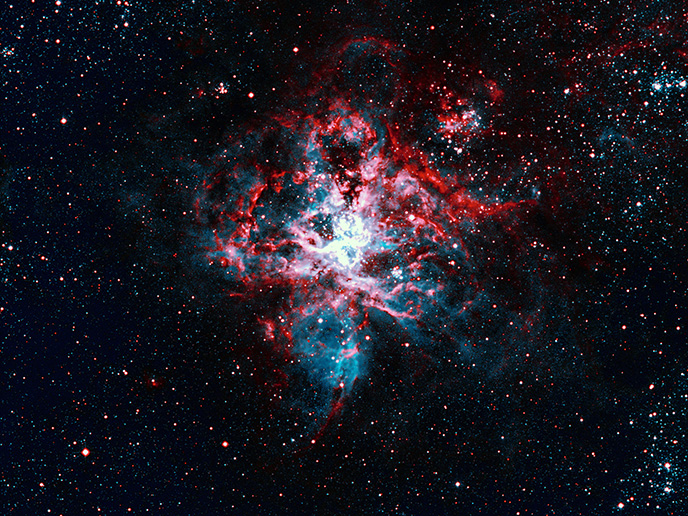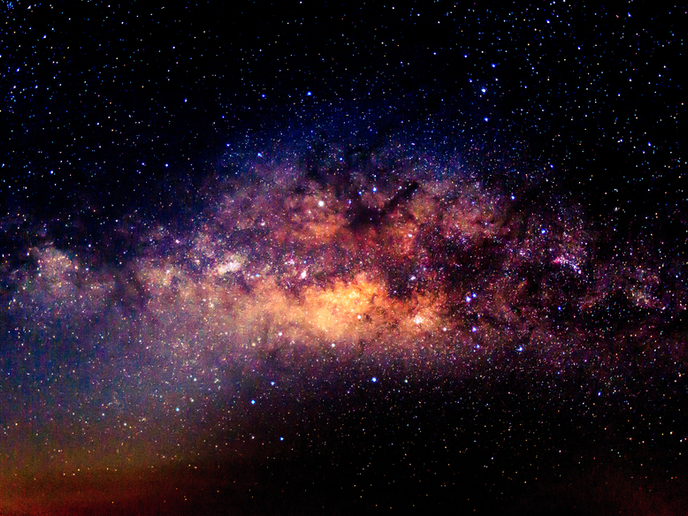Revealing one of the universe’s best kept secrets
We know that the universe is comprised of heavy subatomic particles called baryons. Planets, comets, asteroids, stars, black holes – they’re all composed of baryonic matter. But what astrophysicists and cosmologists can’t seem to figure out is where the baryons are. “While we know they’re out there, we just haven’t been able to find them,” says Nabila Aghanim, an astrophysicist and cosmologist at the Institute of Space Astrophysics, part of the Centre Nationale de la Recherche Scientifique and Université Paris-Saclay. With the support of the EU-funded ByoPiC project, Aghanim and her team set out to reveal one of the universe’s best kept secrets.
Combining graph theory, machine learning and statistical physics
The first step in this cosmic game of hide-and-seek was to detect filaments of the cosmic web. “We quickly discovered that existing detection methods weren’t able to properly handle actual galaxy distribution,” explains Aghanim. “So, we decided not only to use existing methods but to develop our own too.” The result is T-ReX, an algorithm that combines graph theory, machine learning, and the principles of statistical physics. “Unlike other methods, T-ReX can be directly applied to actual galaxy distribution,” adds Aghanim. Finding the hidden baryons also required maps of the sky. As nothing met their exact needs, the project, which received support from the European Research Council (ERC), once again took matters into their own hands. Specifically, researchers constructed a new Planck Sunyaev-Zeldovich (SZ) map to meet their exact requirements.
Missing baryons found in the filaments of the cosmic web
With algorithms and maps in hand, researchers began to search the skies. What they found was evidence of the missing baryons in the filaments of the cosmic web, where they take the form of hot or warm ionised gas. The cosmic web is composed of dark matter, gas, and galaxies. According to Aghanim, this discovery was a breakthrough result for cosmology and the defining moment for the ByoPiC project. “Since the 1990s, simulations have shown that the missing baryons should be found in the cosmic web’s low-density environments, such as filaments,” notes Aghanim. “Our research has finally confirmed this long-held assumption.” Other key outcomes from the project include the characterisation of filament properties in numerical simulations and new insights on the impact the cosmic web has on the properties of galaxy clusters and groups. Researchers also unveiled the cosmological information found in cosmic web elements.
Taking risks can result in breakthrough scientific discoveries
Aghanim says that she was willing to bet that the key to finding the universe’s missing baryons was combining complementary data. The ERC grant allowed her to take this bet. “This was definitely a risk, but, as our breakthrough discoveries demonstrate, sometimes you need to take risks in order to move beyond the status quo,” concludes Aghanim. Building on the breakthrough work of the ByoPiC project, Aghanim and her team are now working to expand their research into such areas as determining the fraction of missing baryons found in the largest cosmic web structures. They are also looking to transfer some of the tools and technology developed during the project for use in biomedical imagery.
Keywords
ByoPic, universe, baryons, planets, comets, asteroids, stars, black holes, baryonic matter, astrophysicists, cosmologists, graph theory, machine learning, statistical physics, cosmic web, galaxy







